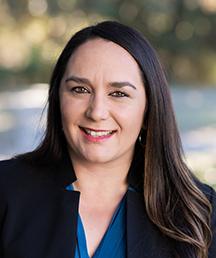• Stephanie Garcia, Ph.D. • Learning Goes On • September 24, 2020 Edition
 Modern Day #Sheroes
Modern Day #Sheroes
A few years back, President Barrack Obama celebrated the contributions of women is space science, such as Margaret Hamilton, Katherine Johnson and Grace Hopper, acknowledging that they inspired not only him but others in their pursuit of reaching excellence through a science career in spaceflight.
Maria Caballero, a NASA engineer at the Armstrong Flight Research Center, advises girls to pursue careers in the STEM field stating: “Never give up and do not allow anyone to put you down. Even if you do not see women represented in some careers don’t let that stop you.” She attributes her motivation in the pursuit of her career to her mom, Katherine Johnson and Margaret Hamilton.
 In 2017, Margot Lee Shetterly’s best-selling book and film Hidden Figures were launched to inspire more women to be the brains behind the greatest maneuverings of spaceflight. They were great mathematicians and computer science majors who helped propel humankind into space. (See NASA’s From Hidden to Modern Figures site.)
In 2017, Margot Lee Shetterly’s best-selling book and film Hidden Figures were launched to inspire more women to be the brains behind the greatest maneuverings of spaceflight. They were great mathematicians and computer science majors who helped propel humankind into space. (See NASA’s From Hidden to Modern Figures site.)
NASA’s Women of STEM website features the work of great women scientists, including women of color. It includes profiles and videos of women in STEM, technology, engineering, math and space.
Implications for In- and Out-of-School Settings
IDRA was recently invited to collaborate with the Girls STEAM Ahead with NASA (GSAWN) initiative to incorporate its incredible resources into IDRA’s Texas Chief Science Officers program activities. The initiative’s goal is to support community-based organizations to engage girls and their families in STEM through the GSAWN activities and digital library.
The resources, exhibits and NASA interactions with subject matter experts help increase awareness and knowledge about our universe and foster STEM identity in girls. Almost 70% of youth participants said their experiences with the GSAWN resources helped them think about new jobs they might be interested in pursuing. These range from an aerospace engineer, space scientist, astrophysicist and astronaut.
Teachers can find activities to use in virtual settings along with posters, exhibits and recorded webinars. Also see NASA’s Hispanic Heritage Month site).


